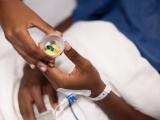In its latest update on cases involving the multidrug-resistant fungus Candida auris, the US Centers for Disease Control and Prevention (CDC) said the number of illnesses detected in the United States has risen by 12 cases to 98.
One of the new clinical cases reported since the last update in June is in Connecticut, which raises the number of affected states to nine. According to the CDC update, the other new cases are in New York, which has the most reported C auris cases with 68. Cases have also been reported in New Jersey (20), Illinois (4), Massachusetts, Maryland, Oklahoma, Florida, and Indiana (1 each).
The case counts do not include colonized patients. But the agency said C auris has been isolated from an additional 110 patients from healthcare facilities in three states where clinical cases have been detected.
Fungus causes severe illness, spreads between patients
C auris was first identified in Japan in 2009 and since then has emerged as a serious global health threat because of its growing resistance to azoles, echinocandins, and polyenes, the three classes of antifungals used to treat Candida infections. This type of multidrug resistance, the CDC says, has not been seen in other species of Candida. The drug-resistant fungus can cause serious invasive infections that affect the bloodstream, heart, brain, ear, and bones, and has been associated with high mortality.
According to the CDC, more than one-third of patients with invasive C auris infections die. Many of the US patients have been elderly, with underlying conditions and extensive exposure to healthcare facilities.
Another concern is that C auris can persist on hospital surfaces and spread between patients. In a May 18 Morbidity and Mortality Weekly Report update on C auris transmission in US healthcare facilities, the CDC noted that epidemiological connections had been found between most cases, with investigations revealing that many of the patients in New York and New Jersey had overlapping stays at interconnected long-term care facilities and acute care hospitals.
CDC investigators also reported in MMWR that whole-genome sequencing indicated that the C auris isolates within in each state were highly related to one another and linked to previously sequenced isolates from South Asia and South America. This finding suggests the pathogen has been introduced from outside the country on multiple occasions and then transmitted locally.
The latest update comes 13 months after the CDC first issued a clinical alert to US healthcare facilities warning about the global emergence of C auris. At that time, there were no reported cases in the United States. A handful of cases that occurred before the clinical alert have been retroactively identified.
To help curb the spread of the drug-resistant fungus, the CDC recommends placing all patients infected or colonized with C auris in a single-patient room and following standard and contact precautions, cleaning patient rooms daily with a disinfectant active against Clostridium difficile, screening close contacts for potential colonization, and informing receiving healthcare facilities when an infected or colonized patient is being transferred. Labs that identify C auris isolates are urged to notify state or local public health facilities and the CDC.
See also:
Jul 14 CDC Candida auris updated case count























